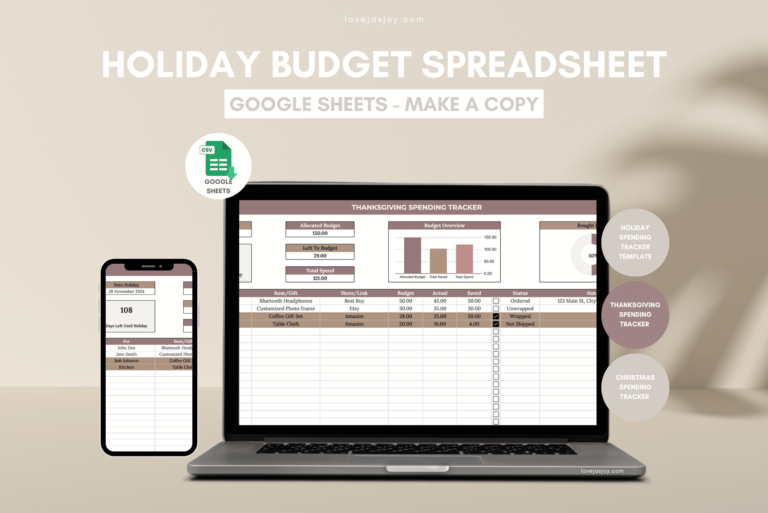Short Term Financial Goals You Can Achieve This Year

These are Achievable Short Term Financial Goals! Any one of these are attainable within one year. Start now!
It is not easy to manage your finances while being a college student. There are multiple things to consider: paying for your books, tuition, dorm, food and more. Furthermore, as a young adult it is important to not only prioritize your school, but also your finances because life does not get any easier. This is an encouragement, not a discouragement.
The truth is that the better you handle your finances, the more confidence and security you will have when facing stressful financial situations. If you have no idea where to start, or even if you’re already on your financial journey, these short term financial goals are perfect for you! These financial goals are the stepping stones toward financial success. Mentally prepare yourself and begin today!
WITH THAT SAID, HERE ARE SHORT TERM FINANCIAL GOALS YOU CAN ACHIEVE THIS YEAR (PART 1)!
Please note that this site contains affiliate links to products or services from third-party websites. Furthermore, we are not financial advisors. The information provided is for general informational purposes only and should not be considered as professional financial advice. Majority of this specific article has been written by AI. By reading this post, you acknowledge and agree to the full terms of our disclaimer.
Table of Contents
- WHAT ARE SHORT TERM FINANCIAL GOALS
- HOW TO ACHIEVE SHORT TERM FINANCIAL GOALS
- SHORT TERM FINANCIAL GOALS YOU CAN ACHIEVE IN ONE YEAR
- Build an emergency fund
- create a budget
- pay off debt using snowball method
- pay off debt using avalanche method
- save for retirement through 401k
- save for retirement through ROTH IRA
- improve your credit score
- start a sinking fund
- start a money saving challenge
- cut spending
- TO CONCLUDE
“But remember the LORD your God, for it is he who gives you the ability to produce wealth, and so confirms his covenant, which he swore to your ancestors, as it is today.”
Deuteronomy 8:18 Tweet
What are Short Term Financial Goals
Short term financial goals are objectives set to be achieved within a relatively brief period, typically within a year. They focus on immediate financial priorities and often serve as stepping stones toward long term financial success.
A short term financial goal might include saving for Christmas or a trip at the end of the year. Examples of a short term financial goal could be improving your financial literacy, cutting impulsive spendings, and everything that is included in this article.
How to Achieve Short Term Financial Goals
Achieving short term financial goals involves several key steps:
- Define Clear Objectives: Identify specific and measurable financial targets you aim to achieve in the short term.
- Create a Budget: Develop a detailed budget outlining income, expenses, and savings goals for better financial management.
- Prioritize and Allocate Funds: Determine which goals are most urgent or impactful and allocate resources accordingly.
- Track Progress: Regularly monitor and reassess your financial situation to ensure you’re on track to meet your goals.
Short Term Financial Goals You Can Achieve in One Year
Short Term Financial Goal: Build an Emergency Fund
BUILD AN EMERGENCY FUND
Importance of Building an Emergency Fund: Building an emergency fund provides a financial safety net, it covers unexpected expenses like medical emergencies or job loss. Having an emergency fund provides you more financial security when facing unforeseen circumstances.
- Set a Realistic Goal: Determine an initial target, like $500 or $1000, as your emergency fund. Aim for an amount that covers basic necessities in case of unexpected expenses. A rule of thumb is to save 3-6 months worth of your expenses, but start with an amount that is more attainable, like $2500 and work your way up.
- Create a Separate Savings Account: Open a dedicated savings account specifically for your emergency fund. To maximize growth, contribute to savings accounts that offer a higher APY, like money market savings.
- Regular Contributions: Commit to allocating your money consistently. Even small amounts, like $25 or $50 per paycheck, can steadily build your fund over time! You will be so proud of yourself as you witness your savings steadily grow.
- Automate Savings: Set up automatic transfers from your checking account to your emergency fund. Automation ensures consistency and reduces the temptation to spend those funds elsewhere.
- Adjust and Increase: As your financial situation improves (e.g., raise, pay off a debt), increase your emergency fund for added financial security.
Short Term Financial Goal: Create A Budget
Create A Budget
Importance of Creating a Budget Plan: Creating a budget plan establishes and encourages financial discipline, ensuring expenses align with income. It allows you to save, invest, and work towards your financial goals effectively.
- List Income and Expenses: Document all sources of income, including wages, allowances, or any side hustles. Then, list your essential expenses like rent, utilities, groceries, transportation, and loan payments.
- Categorize and Prioritize: Categorize expenses into fixed (rent, utilities) and variable (entertainment, dining out). Prioritize essential expenses and allocate a portion for savings and discretionary spending.
- Utilize Budgeting Tools: Consider using budgeting apps or online tools like Mint or a budget planner to streamline the process. These tools help track spending, set limits for categories, and visualize your financial progress.
- Review and Adjust:
Regularly review your budget to ensure you’re staying on track. Adjust categories as needed based on changing circumstances or unexpected expenses.
Short Term Financial Goal: Pay Off Debt Using Snowball Method
Pay Off Debt Using Snowball Method
Importance of Paying Off Debt Using the Snowball Method: Paying off debt using the snowball method offers psychological wins by tackling smaller debts first, fostering momentum and motivation throughout the debt payoff journey.
- List Your Debts: Compile a list of all your debts, including credit cards, student loans, or personal loans. Include the outstanding balance and minimum monthly payments for each.
- Arrange by Balance: Order your debts from smallest to largest balance, disregarding interest rates.
- Pay Minimums and Add Extra to Smallest Debt: Make minimum payments on all debts but allocate any extra funds to the smallest debt. Focus on paying it off completely while maintaining minimum payments on other debts.
- Snowball Effect: Once the smallest debt is cleared, take the amount you were paying towards it and add it to the minimum payment of the next smallest debt. Continue this process until all debts are paid off.
Short Term Financial Goal: Pay Off Debt Using Avalanche Method
Pay Off Debt Using Avalanche Method
Importance of Paying Off Debt Using the Avalanche Method: Paying off debt using the avalanche method minimizes interest payments, strategically targeting high interest debts first, ultimately reducing the overall debt burden and accelerating the path to financial freedom.
- List Your Debts: Similar to the snowball method, list all debts, but this time, arrange them based on interest rates, starting with the highest interest rate first.
- Pay Minimums and Target High Interest Debt: Make minimum payments on all debts while directing any additional funds towards the debt with the highest interest rate.
- Tackle Next High Interest Debt: Once the highest interest debt is paid off, move to the next one, repeating the process until all debts are cleared.
Start the new year out financially confident by using our Simple Annual Budget Spreadsheet! Use code “199LOVEBUDGET” to take the first step toward achieving your financial goals for only $1.99 🙂
Short Term Financial Goal: Save For Retirement Through 401(k)
Save For Retirement Through 401(k)
Importance in Saving for Retirement (401K): Saving for retirement, even in the short term, through a 401(k) plan is crucial due to the power of compound interest. Starting early allows your money to grow significantly over time, giving you a financial head start for retirement.
Learn more about 401k retirement plan through IRS.gov.
- Understand Your Employer’s Plan: Learn about your employer’s 401(k) plan. Determine if they offer a match – this is essentially free money for your retirement and should be taken advantage of.
- Enroll and Set Contribution Percentage: Enroll in the 401(k) plan offered by your employer. Set a contribution percentage, aiming for at least enough to secure the full employer match if available.
- Choose Investments: Select investment options that align with your risk tolerance and long term goals. Typically, diversified mutual funds or target date funds are suitable for beginners.
- Review and Increase Contributions: Regularly review your 401(k) contributions. Aim to increase them over time, especially as your income grows or whenever possible.
Short Term Financial Goal: Save For Retirement Through ROTH IRA
Save For Retirement Through ROTH IRA
Importance in Saving for Retirement (ROTH IRA): A ROTH IRA offers tax advantages and flexibility. Contributing to a ROTH IRA in the short term allows tax free growth and potentially tax free withdrawals in retirement, providing financial security.
- Determine Eligibility: Confirm eligibility requirements. Individuals must have earned income (such as wages or self employment income) to contribute to a ROTH IRA.
- Choose a Provider and Open Account: Select a reputable financial institution that offers ROTH IRA accounts. Open an account and fund it according to your capacity.
- Set Contribution Amounts: Decide on a contribution amount that fits your budget. Even small contributions can grow substantially over time due to compounding.
- Select Investments: Similar to a 401(k), choose suitable investments within your ROTH IRA based on your risk tolerance and long term goals.
Short Term Financial Goal: Improve Your Credit Score
Improve Your Credit Score
Importance in Improving Your Credit Score: A good credit score opens doors to better financial opportunities. Whether applying for loans, renting apartments, or even securing certain jobs, a healthy credit score is crucial.
- Check Your Credit Report: Obtain a free credit report from annualcreditreport.com. Review it thoroughly to spot any errors or discrepancies that might be impacting your score.
- Pay Bills on Time: Timely payments are key. Set up reminders or automatic payments to ensure bills are paid promptly, as this is the most significant factor influencing your score.
- Reduce Credit Card Balances: Aim to keep credit card balances low relative to their limits. Lowering credit utilization can positively impact your score.
- Avoid Opening Multiple Accounts: Be cautious about opening new credit accounts frequently. Each application generates a hard inquiry, which can temporarily lower your score.
- Learn more about your credit report through FTC Consumer Advice.
Short Term Financial Goal: Start a Sinking Fund
Start a Sinking Fund
Importance in Starting a Sinking Fund: A sinking fund is a vital tool for planned expenses, helping avoid debt by setting aside money specifically for future needs like a car down payment or a dream vacation. It fosters financial discipline and avoids stress when these expenses arise.
- Identify Your Goals: Determine the specific financial goals you’d like to achieve, such as saving for a car, vacation, or any other significant expense.
- Calculate and Set Targets: Estimate the total cost of your goal and break it down into manageable monthly or weekly savings targets. This helps in setting achievable milestones.
- Open a Separate Account or Container: Designate a separate savings account or a physical container (if it’s for cash) specifically for your sinking fund. This separation ensures these funds aren’t mingled with everyday expenses.
- Consistent Contributions: Regularly contribute to your sinking fund according to your set targets. Even small, consistent contributions can accumulate to cover your planned expenses over time.
- Review and Adjust: Periodically review your sinking fund progress. Adjust contributions if necessary based on changes in your financial situation or goals.

52 wk Money Saving Challenge
This income based 52 week money saving challenge is realistic and attainable! You set the amount based on your income. This is perfect for everyone who wants to save more and improve their finances.
Short Term Financial Goal: Start a Money Saving Challenge
Start a Money Saving Challenge
Importance of Starting A Money Saving Challenge: Money saving challenges are fun and effective ways to instill a saving habit. They gamify the process, encouraging participants to consistently save money over a set period, fostering financial discipline.
- Choose a Challenge: Select a money saving challenge that resonates with your financial goals. Examples include our Income Based 52 Week Challenge, where you save based on your income per week.
- Set Clear Rules and Goals: Define the rules of your chosen challenge, specifying how much you’ll save and how often. Ensure it aligns with your budget and is achievable.
- Create Accountability: Involve friends, family, or an online community to participate in the challenge with you. Sharing progress and supporting each other can boost motivation.
- Track Progress and Celebrate Milestones: Keep track of your savings progress. Celebrate milestones along the way to stay motivated and reinforce the habit of consistent saving.
- Reflect and Continue: At the end of the challenge, reflect on your accomplishment and consider starting another challenge or integrating the habit of saving into your routine.
Short Term Financial Goal: Cut spending
Cut spending
Importance in Cutting Your Spendings: Reducing spending is crucial for achieving financial goals, as it frees up funds for savings, debt repayment, or investing. It helps create a healthier financial balance, promoting better money management habits and increased financial security.
- Assess Your Expenses: Review your current spending habits by analyzing bank statements, receipts, or budgeting apps. Identify areas where you can make adjustments.
- Identify Non-Essential Expenses: Differentiate between essential and non-essential expenses. Non-essential spending might include dining out frequently, subscription services, impulse purchases, etc.
- Create a Budget: Develop a realistic budget that aligns with your income and financial goals. Allocate specific amounts for essentials like rent, utilities, groceries, and savings.
- Prioritize Spending Cuts: Target areas where you can make cuts without compromising your basic needs. Consider negotiating bills, finding cheaper alternatives, or eliminating unnecessary subscriptions.
- Implement Cost-Cutting Strategies: Practice mindful spending by adopting strategies like meal planning, buying generic brands, using discounts or coupons, or opting for free or low-cost entertainment. We also provide Smart Ways You Can Save Money Without Sacrificing Fun.
- Track Progress and Adjust: Monitor your spending regularly to track progress. Adjust your budget and spending habits as needed to stay on track with your financial goals.
- Stay Motivated and Reward Yourself: Celebrate milestones and achievements in spending cuts. Reward yourself occasionally to maintain motivation, but within the limits of your revised budget.
This is the end of Short Term Financial Goals You Can Achieve This Year! Obviously there’s more, but that’s it just for this article.
Do not be discouraged by how much money you wish you had, instead focus on what you already do have and how you can allocate your hard earned money wisely!
Be the person you want to be today, so your future self can thank you for your dedication. Every day is a new start, make the most of every moment you are blessed with.
Live intentionally, purposefully and wisely. Good luck in your financial endeavors!
love, Jas Joy
Other Posts You May Like
Related Topics



A Payday Routine: How to Budget Your Paycheck Like a Financial Expert


